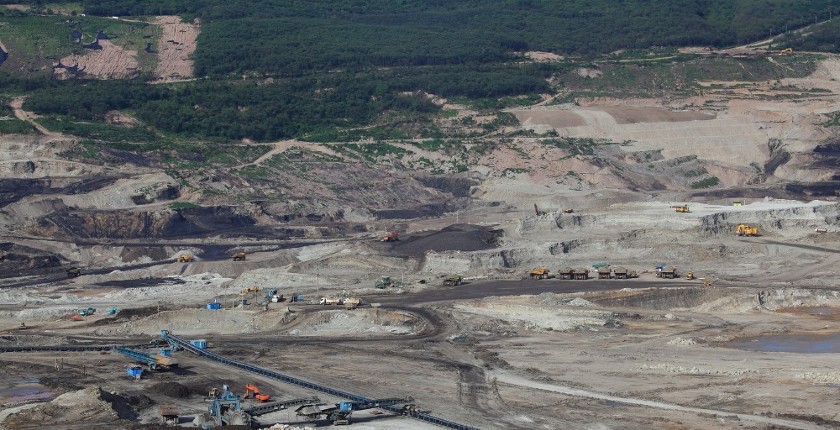
Photo: Bankwatch
More than 100 hectares of forests in Romania’s Gorj region could be cut down to expand a lignite mine. Romania is making a U-turn on decarbonization processes, and the government is again acting contrary to its EU commitments, Bankwatch has warned.
The Romanian government adopted the decision to cut down a 106-hectare forest without compensation so that the state-owned coal mine and plant operator Complexul Energetic Oltenia (CE Oltenia) could expand one of its lignite mines, Bankwatch reported.
CE Oltenia plans to boost Timișeni-Pinoasa lignite output to 8 million tons a year
The government’s decision will allow CE Oltenia to increase lignite output at the Timișeni-Pinoasa mine to 8 million tons per year.
That’s almost half of the total 2021 lignite production by CE Oltenia, which operates most of the country’s coal mines and thermal power plants.
Coal mine expansion contravenes National Recovery and Resilience Plan
The decision to expand lignite mining, adopted by the government last week, runs counter to the decarbonization process, which is a part of the National Recovery and Resilience Plan (NRRP) and national law, which envisions phasing out coal by 2032, Bankwatch said.
“Expanding the Timișeni-Pinoasa mine in Gorj county to a capacity of 8,000,000 tonnes/year of lignite, not only increases CO2 emissions but also means that more than 100 hectares of forest will be wiped out,” warned Alexandra Doroftei, the coal campaigner at Bankwatch Romania.
Double negative effect: increased emissions and reduced capacity to absorb CO2 from the atmosphere
She points out that deforestation and burning lignite will have a double negative effect on the environment by increasing CO2 emissions and reducing the absorption capacities of this greenhouse gas from the atmosphere.
Boosting lignite production
Late in 2022, the government made two more decisions that contradicted decarbonization processes, noted Bankwatch. The government approved a decision to postpone the closure of two 660 MW blocks, Rovinari 3 and Turceni 7, and extend their operation until October 2023.
The government also postponed the closure of two 660 MW blocks, Rovinari 3 and Turceni 7
The association notes that this could lead to a potential increase in lignite production by 15.5 million tons per year. Between 2017 and 2021, CE Oltenia had an average annual production of approximately 18.5 million tons of lignite from the ten mines it operates.
The Romanian giant also operates nine thermal power plants in the country, with a total capacity of 2.6 GW.
Hindering decarbonization efforts
The decarbonization law is one of the milestones in the National Recovery and Resilience Plan that had to be completed by the end of 2022 for Romania to receive the second tranche of EU recovery funds, said Bankwatch.
The purpose of the decarbonization law is to establish a framework for reducing CO2 emissions in the energy sector, but the latest changes have the exact opposite effect, Bankwatch estimates.
“The actions of the Romanian government towards decarbonization of the energy sector show that cashing in recovery funds is its main motivation, not real measures to decrease CO2 emissions and advance the energy transformation. We urge the government to act on the climate crisis and stop postponing the much-needed measures to mitigate it”, commented Doroftei.
Last year, the government approved EUR 2.66 billion for restructuring CE Oltenia
Bankwatch notes that the energy giant has a coal units retirement calendar in its restructuring plan approved by the European Commission as a condition for obtaining state aid.
Coal mines that supply the coal to the respective units would follow the same calendar, not the opposite, according to this association that monitors the environmental and social impact of public and private projects.
Also, in mid-December, the government scrapped the provision that allowed coal-fired power plants to stay in technical reserve.


















Be the first one to comment on this article.